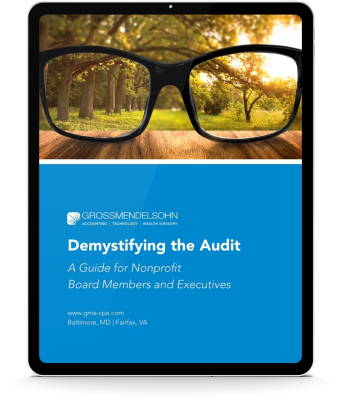A conflict of interest policy is important for any business, but has greater significance for nonprofit organizations. A good conflict of interest policy helps a nonprofit organization protect its reputation AND its tax-exempt status.
Why Is a Conflict of Interest Policy Important for Nonprofits?
Nonprofits primarily serve charitable causes and are mostly supported by the general public. Therefore, it’s critical that funds are put to proper use and do not benefit any individual associated with the organization. It’s also essential that your organization be perceived by the public in the best possible light.
Form 990, an information form that nonprofits are required to file, specifically asks, “Does the organization have a conflict of interest policy?” Form 990 also requires other disclosures about transactions, meeting certain thresholds, with interested parties such as officers, board members and key employees of an organization. Your Form 990 is available for public review on various websites. Obviously, you want position your organization in the best light possible. Many nonprofits use the Form 990, in part, to generate positive buzz for their organizations.
The big question is how to formulate a good conflict interest policy. And if a problem does exist, how should it be overcome and tackled?
Key Ingredients of a Good Conflict of Interest Policy
Following are guidelines for writing a good conflict interest policy for your nonprofit organization:
- The policy should be in writing and clear to board members, directors, trustees and key employees.
- Avoid using a boilerplate policy when writing your conflict of interest policy. A good policy is tailored to the specific needs and goals of your organization.
- Board and staff members should review the policy yearly.
- The policy should clearly indicate the steps that should be taken when a conflict or potential conflict arises. For example, policies often call for a conflict to be reported immediately to certain individuals in management within the nonprofit.
- If the potential conflict involves a board member, then the board member should not be allowed to vote on anything pertaining to the conflict.
- Before a company is engaged by a nonprofit to provide services, the nonprofit should have the company verify that, to the best of its knowledge and belief, it is unaware of any conflicts of interest.
Case Study: How a Potential Conflict of Interest Was Avoided
Take the following example: John Smith is on the board of Charitable, Inc. and is also the CEO for Computer Support, Inc. Charitable, Inc., wants to upgrade their computers and approaches several companies, including Computer Support, Inc., to provide a proposal for the needed services.
Since John is the CEO of Computer Support Inc., this can be a potential conflict of interest because John’s obligation to further the nonprofit’s charitable purpose may be at odds with his own financial interests. Therefore, he should immediately notify the chairman of the board and remove himself from all discussions and votes regarding the upgrade of Charitable, Inc.’s computer systems.
Note that this transaction can still be allowed as long as it is an arm’s length transaction and is carefully documented. What’s important is that John NOT be involved in the decision. Furthermore, the transaction must be FAIR to the nonprofit. In other words, John must not get anything more than fair market value for his services since this transaction could be scrutinized by the public. More importantly, if John receives excess benefits from this transaction, the nonprofit organization can risk losing its tax-exempt status.
Need Help?
Contact us online or call 800.899.4623.


